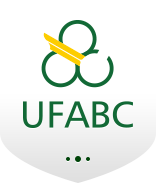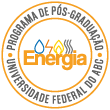Banca de QUALIFICAÇÃO: EDUARDO VICENTE VALDÉS CAMBERO
Uma banca de QUALIFICAÇÃO de DOUTORADO foi cadastrada pelo programa.DISCENTE : EDUARDO VICENTE VALDÉS CAMBERO
DATA : 30/09/2019
HORA: 15:00
LOCAL: sala 301, 3º andar, Bloco B, Campus SA
TÍTULO:
Rectenna based on a Solar Cell Antenna Array as an Hybrid Energy Harvesting Solution
PÁGINAS: 58
GRANDE ÁREA: Engenharias
ÁREA: Engenharia Elétrica
SUBÁREA: Sistemas Elétricos de Potência
ESPECIALIDADE: Conversão e Retificação da Energia Elétrica
RESUMO:
This project aims to study, analyze and develop topologies for RF harvesting system, with the scope of increasing the autonomy of remote devices used in low power applications. The project’s goals will be to study variations in three topologies of classical planar antennas (patch, PIFA and quasi-Yagi), also including rectification and filtering circuits, in order to verify the performance of such elements as potential rectennas. Thus, the research has challenges related to the dimensions and operability of the prototypes, the efficiency of the conversion of RF-DC and its interaction with the radiant element. Setups of measurement, real tests on prototypes, including anechoic chamber analyzes are also planned.
The progress of the work done so far, has directed us towards three fundamental aspects or research. One of them is the possibility of employing a single antenna for Wireless Information Transfer and RF energy harvesting, receiving simultaneously signals from the 1.8 and 2.4 GHz bands. For this purpose, we designed a quasi-Yagi antenna associated with a 3-ports microstrip structure, which was acting as a “signal splitter” based on the frequency. The communication and harvesting metrics of the proposed prototype were compared with the performance of a quasi-Yagui antenna working without the “splitter”. The satisfactory results endorse the operability and direct application for SWIPT (Simultaneous Wireless Information and Power Transfer) of the proposed antenna.
A second research line contemplates the design of the rectifier’s structures to be integrated with the antennas. The predefined working scope is enhancing the development of rectifiers for input power levels (Pin) in the order of -20 dBm. For this reason, rectifier topologies are being developed in order to reach elevated efficiency values for the described Pin, which is not frequently addressed in the literature. This research evidences low cost rectifiers based on FR4 substrate, avoiding the use of lumped elements as capacitors and inductors. The resulting rectifiers are presenting peak efficiency values over 25% for the defined Pin.
On the other hand, there is a third research direction were solar cells and antennas have been integrated in the same structure to harness energy from two different sources. The integration process has challenges related with how solar cells and antennas influence over each other. In that way, experimental results have been obtained from proof-of-concepts prototypes of patch rectennas, and patch rectennas arrays, all of them using solar cells as radiating elements. Antenna arrays have been contemplated with the goal of increase the power level at the rectifiers input.
MEMBROS DA BANCA:
Presidente - Interno ao Programa - 1545701 - IVAN ROBERTO SANTANA CASELLA
Membro Titular - Examinador(a) Interno ao Programa - 2286312 - JOEL DAVID MELO TRUJILLO
Membro Titular - Examinador(a) Externo ao Programa - 1761107 - RICARDO SUYAMA
Membro Suplente - Examinador(a) Interno ao Programa - 1876380 - THALES SOUSA
Membro Suplente - Examinador(a) Externo ao Programa - 1544396 - RODRIGO REINA MUNOZ




